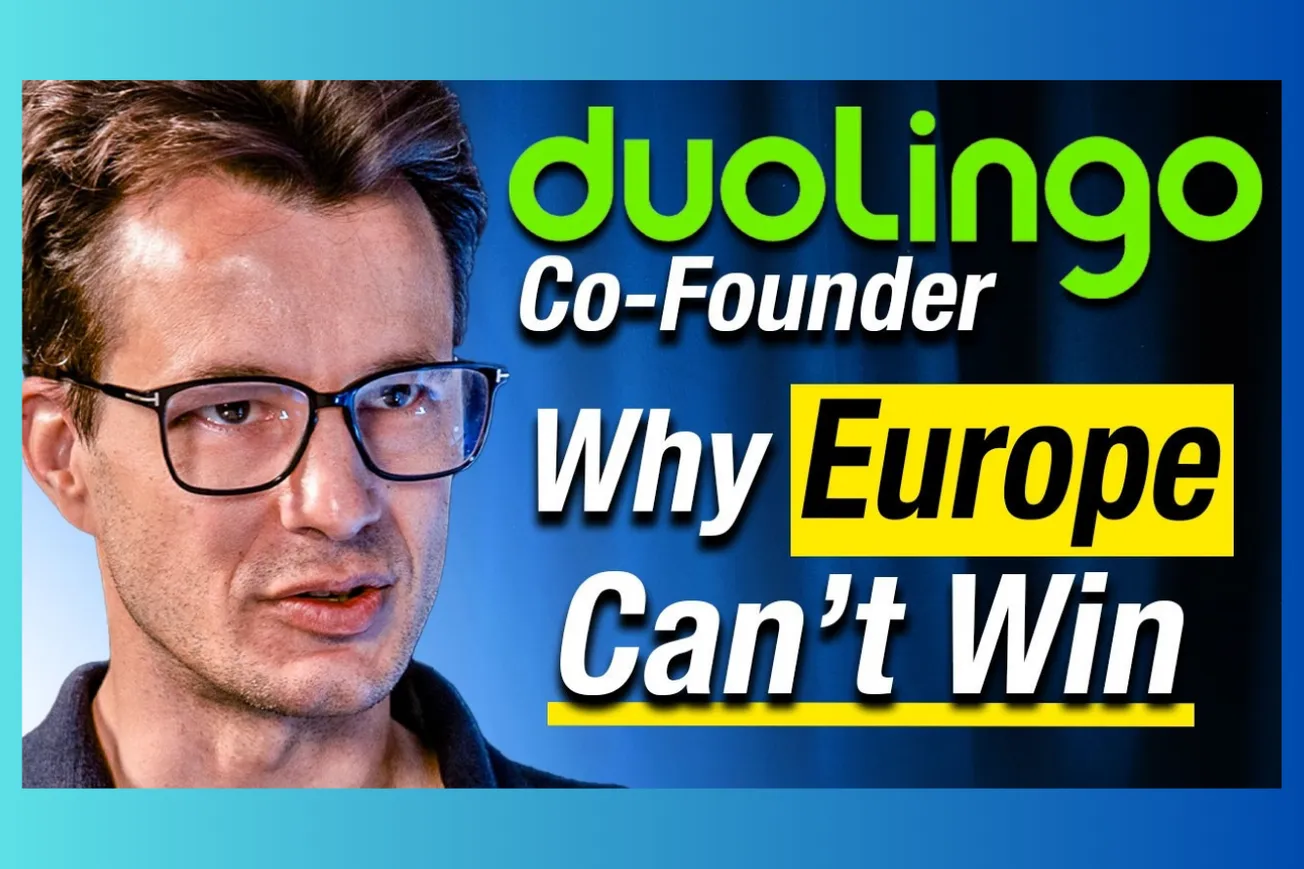Table of Contents
Duolingo’s co-founder, Severin Hacker, reveals how AI is transforming education from content creation to conversational tutoring. His vision blends personalization, interactivity, and efficiency—turning Duolingo into a global benchmark for AI-first learning platforms.
Key Takeaways
- Duolingo uses AI to 12x content generation, cutting course development time from decades to a single year.
- The company leverages LLMs for adaptive sentence creation, grammar constraints, and multimodal learning.
- Its AI features, like "Video Call with Lily," demonstrate Duolingo’s pivot from static lessons to live conversation simulators.
- Duolingo’s mission: replicate the power of one-on-one tutoring for everyone, globally.
- Hacker sees retention and motivation—not information—as the hardest challenges in edtech.
From Tech-First to AI-First: Duolingo’s Core Transition
Duolingo always led with technology, but the leap from software to AI redefined its roadmap. As one of OpenAI’s earliest launch partners, the team experienced the ChatGPT breakthrough firsthand.
- Hacker calls it "an iPhone moment"—transformative, ubiquitous, and instantly obvious.
- Initial wins included AI-assisted content production, which drastically shortened time-to-market.
- Previously, it took 12 years to build 100 courses. With AI, Duolingo created 148 courses in one year.
- Human-in-the-loop design still matters—curriculum structure remains manual, but AI fills in lessons, sentence logic, and vocabulary scaffolding.
Personalized Learning: Real-Time, User-Driven, and Multimodal
The future of learning at Duolingo is hyper-personalized, multimodal, and interest-driven.
- AI now builds sentences customized to individual vocabularies, grammar stages, and topic interests.
- Courses can be created dynamically—no need to prebuild every module.
- Duolingo imagines on-demand, bespoke lessons for users traveling to France with a love for rugby.
- "Video Call with Lily" allows users to speak with a memory-capable, emotionally aware AI character.
- This shift merges the best of private tutoring with the scalability of consumer tech.
How AI Transforms Internal Workflows
AI is reshaping not just Duolingo’s product, but its internal operations.
- Engineers use AI tools like Cursor and Copilot for coding acceleration and automation.
- Designers and PMs adopt AI to co-create prototypes—chess lessons were prototyped by a PM using AI tools alone.
- Customer support has been automated up to 80% with Decagon, enabling support for both free and premium users.
- AI adoption is voluntary—but subsidized—across the company, with emphasis on productivity and creativity.
The Economics of AI-Driven Features
Duolingo’s AI innovations are both margin-expanding and cost-sensitive.
- Content generation is a one-time investment with massive ROI.
- Real-time AI features, like live conversation tools, carry a unit cost per interaction.
- As a result, high-cost AI features are bundled into higher-tier subscriptions (e.g., Duolingo Max).
- Hacker anticipates falling inference costs will eventually democratize access to these features across all users.
Retention: The True Moat in EdTech
Forget curriculum. Motivation is the real bottleneck to learning outcomes—and Duolingo's edge.
- Duolingo isn't just an app. It's a gamified motivation engine.
- Hacker calls streaks and XP the secret to maintaining user commitment.
- Users fear losing streaks more than they crave new content—loss aversion is engineered into the core loop.
- Competitors lose ground not in features but in retention rates.
- Duolingo optimizes everything around one key question: who comes back tomorrow?
Future Roles and the CS Debate
What happens to software engineers in an AI-native world?
- Hacker believes AI lowers the barrier to entry, enabling more people to build apps—even if they don’t code.
- He predicts convergence between product, engineering, and design into a single AI-empowered hybrid role.
- Despite this, he still sees value in traditional CS degrees for logic and systems thinking.
- Entry-level engineers are still hired at Duolingo, driven by the belief that AI-native learners become the best AI users.
Global Ambition, Local Execution
Hacker offers a candid critique of Europe’s startup environment.
- Duolingo couldn’t have raised money in Europe with zero revenue over five years.
- U.S. VC willingness to bet on vision, not traction, made the company possible.
- Despite European roots, Hacker recommends all ambitious founders move to Silicon Valley.
- Duolingo itself is headquartered in Pittsburgh—not SF—because secondary offices tend to cannibalize HQ talent.
Beyond Languages: Math, Music, and Chess
Duolingo’s ambitions go beyond language.
- Failed experiment: a standalone math app, eventually folded back into the main app.
- Music and chess were added as interactive, AI-enabled courses inside the flagship platform.
- Chess was prototyped entirely with AI tools by a non-technical PM.
- The success reaffirms Hacker’s thesis: AI expands who can build—and how fast.
What Comes Next: Credentials, Community, and Identity
To rival traditional institutions, Duolingo aims to serve all three pillars of education: instruction, credentialing, and social community.
- The Duolingo Score is an early move into credentialing—quantifying language fluency beyond self-reporting.
- Future versions may support job applications or immigration benchmarks.
- Hacker envisions greater social functionality—"Duo Social" concepts to build peer-to-peer motivation.
- Education is more than pedagogy—it’s identity, and Duolingo wants to be part of that narrative
Severin Hacker’s Duolingo isn’t just deploying AI—it’s redefining how humans learn, connect, and progress in a world of infinite knowledge and finite attention. In the battle between AI winners and losers, Duolingo is making a definitive claim to lead.





